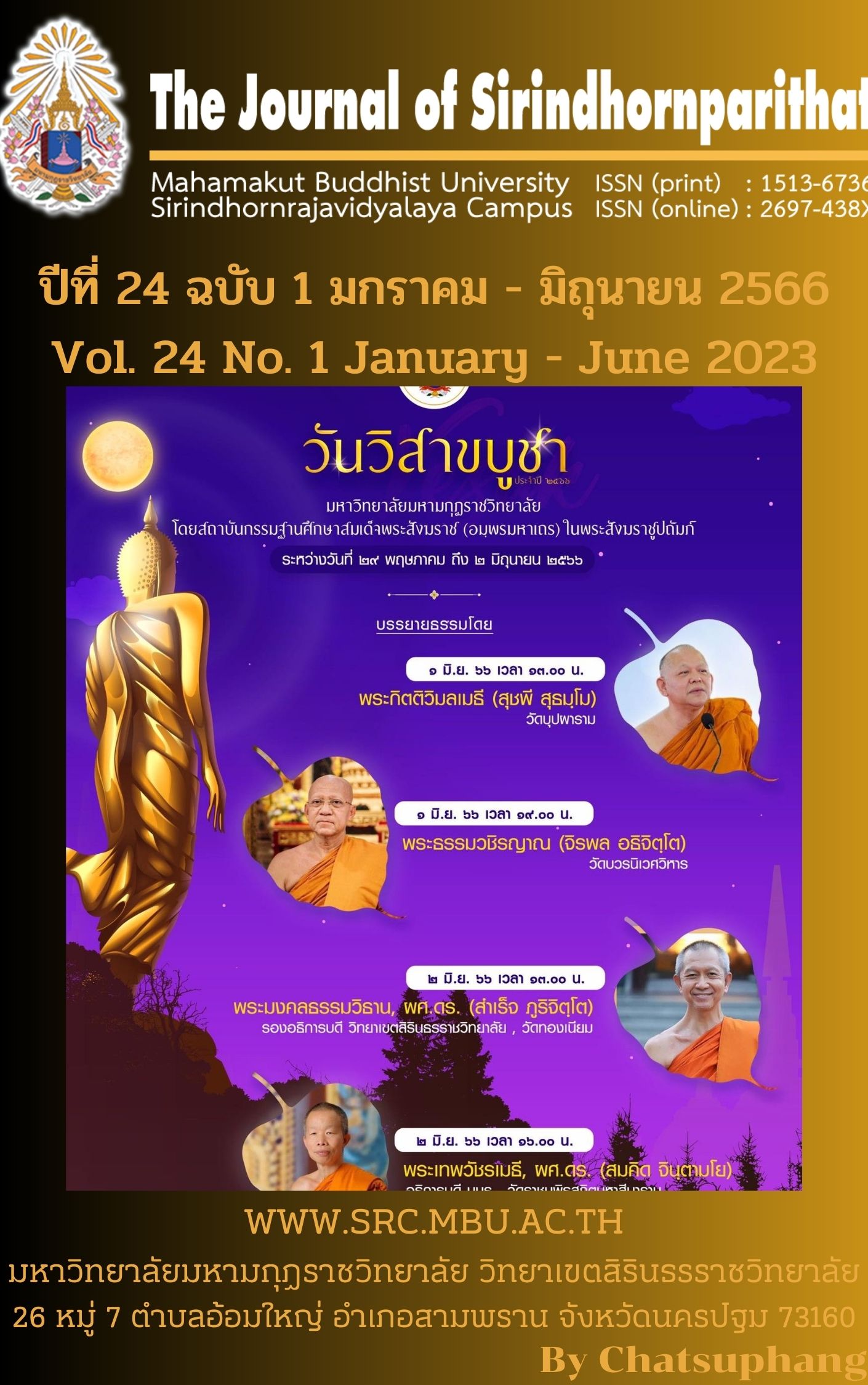Guidelines for Classroom Management in Accordance with the 4 Sappapaya Principles of Teachers under the office of Ang thong Secondary Educational Service Area
Keywords:
Guidelines for Classroom Management, the 4 SappapayaAbstract
The objectives of this research are: 1) to study the classroom management of teachers under Ang Thong Secondary Educational Service Area 5, 2) to study guidelines in classroom management according to the four principles of Sappaya of teachers under Ang Thong Secondary Educational Service Area 5, and 3) to propose the guidelines of classroom management according to the four principles of Sappaya of teachers under Ang Thong Secondary Educational Service Area 5. The mixed research methodology was used in the study. The qualitative data were collected from documents and in-depth interviews with 5 school administrators through interview form, and then analyzed by content analysis. The questionnaires were used for quantitative data collecting from 260 samples working under Ang Thong Secondary Educational Service Area 5. The samples were obtained by simple random sampling. The data were analyzed by percentage, frequency, mean and standard deviation.
The results of the study were found that:
- 1. The state of classroom management of teachers under Ang Thong Secondary Educational Service Area 5 in overall was at a high level. When considering in each aspect with descending order, the highest level was on setting up rules and regulations for the classroom, followed by positive discipline building, building motivation and reducing students’ undesirable behaviors, building positive relationship and analytical thinking skills, decision making, time management, teaching strategies of teachers, and building classroom atmosphere and environment suitable to learning respectively.
- 2. The guidelines in classroom management according to the four principles of Sappaya of teachers under Ang Thong Secondary Educational Service Area 5 consist of building classroom atmosphere and environment suitable to learning, setting up classroom rules and regulations, building motivation and reducing students’ undesirable behaviors, building positive discipline, choosing teaching strategies of teachers, and building positive relationship.
3. The guidelines of classroom management according to the four principles of Sappaya of teachers under Ang Thong Secondary Educational Service Area 5 are as follows: In Avasa Sappaya, the classroom management is focused on safety, suitable a atmosphere and environment, cleanliness, beuaty and personal space. In Ahara Sappaya, the price of food and merchandises in shops and the welfare shop is reasonable. In Puggala Sappaya, students are encouraged and supported to express their ability and their achievements are shown on the school bill-board, classroom board or in public. In Dhamma Sappaya, teaching and learning techniques and cultivating morals and ethics are arranged for students.
References
กระทรวงศึกษาธิการ. (2557). พระราชบัญญัติการศึกษาแห่งชาติ พ.ศ. 2542 ที่แก้ไขเพิ่มเติม (ฉบับที่ 2) พ.ศ. 2545 และที่แก้ไขเพิ่มเติม (ฉบับที่ 3) พ.ศ. 2553. กรุงเทพมหานคร : โรงพิมพ์องค์การรับส่งสินค้าและพัสดุภัณฑ์ (ร.ส.พ.).
นเรศ บุญช่วย. (2555). แผนกลยุทธ์เพื่อพัฒนาภาวะผู้นำเชิงสร้างสรรค์ที่เหมาะสมสำหรับผู้บริหารสถานศึกษา .หลักสูตรครุศาสตรดุษฎีบัณฑิต สาขาบริหารการศึกษา. บัณฑิตวิทยาลัย มหาวิทยาลัยราชภัฏวไลยอลงกรณ์ ในพระบรมราชูปถัมภ์ จังหวัดปทุมธานี.
พระสมุห์วินิตย์ ถิรจิตฺโต (การะเกตุ). (2561). การบริหารแหล่งเรียนรู้ตามหลักสัปปายะ 4 ของโรงเรียนมัธยมศึกษา อำเภอเมือง จังหวัดสมุทรปราการ. ปริญญาพุทธศาสตรมหาบัณฑิต สาขาวิชาพุทธบริหารการศึกษา บัณฑิตวิทยาลัย มหาวิทยาลัยจุฬาลงกรณราชวิทยาลัย.
วราภรณ์ รักวิจัย. (2562). การสร้างบรรยากาศการเรียนรู้ (Learning environment). วารสารวิชาการศึกษาศาสตร์, 2(3) : 25-31.
Mullins.Jouce A. (2001). How field trips in natural areas associated with museums. Arboreta and Aquaria impact the educational experiences of teachers and students.Ph.D. Dissertation. The University of Southern Mississippi.

Downloads
Published
Issue
Section
License
Copyright (c) 2023 Mahamakut Buddhist University

This work is licensed under a Creative Commons Attribution-NonCommercial-NoDerivatives 4.0 International License.
บทความที่ได้รับการตีพิมพ์เป็นลิขสิทธิ์ของ มหาวิทยาลัยมหามกุฏราชวิทยาลัย วิทยาเขตสิรินธรราชวิทยาลัย
ข้อความที่ปรากฏในบทความแต่ละเรื่องในวารสารวิชาการเล่มนี้เป็นความคิดเห็นส่วนตัวของผู้เขียนแต่ละท่านไม่เกี่ยวข้องกับหาวิทยาลัยมหามกุฏราชวิทยาลัย วิทยาเขตสิรินธรราชวิทยาลัย และคณาจารย์ท่านอื่นๆในมหาวิทยาลัยฯ แต่อย่างใด ความรับผิดชอบองค์ประกอบทั้งหมดของบทความแต่ละเรื่องเป็นของผู้เขียนแต่ละท่าน หากมีความผิดพลาดใดๆ ผู้เขียนแต่ละท่านจะรับผิดชอบบทความของตนเองแต่ผู้เดียว



